When people find out that I’m vegetarian, about half of them ask me whether or not I eat seafood. I usually reply that I do, as I eat sea vegetables. Most are confused by this response for several reasons. Firstly, they’re used to meeting self-described vegetarians who aren’t actually vegetarians as they make exceptions for bivalves, cephalopods, crustaceans, echinoderms, sea snakes, penguins, dolphins, otters, whales, and any land animal who dares wander too far from the shore.

What I mean is that I do eat seafood as long as it is not animal, because that’s what being vegetarian actually means — not eating animals, not even wet ones. (For the record, were I to make exceptions for any animals, it would be for the chicken and I would tell people that I eat airfood).
In the West, when we think of it at all, we tend to think of all marine life as being unlike life on land. The act of slaughtering marine animals is usually characterized as “harvesting.” In English, when we talk about hunting marine animals, the name for their obliteration is often derived from the animals’ names (e.g. fishing, sealing, and whaling). Compare that to “birding,” which means observing birds through binoculars and consulting guide books, not exterminating them with a rifle — and has the most self-righteous animal rights activist ever looked on a hunting rifle and fishing pole with equal amounts of revulsion?

Another obstacle faced by sea vegetables is the fact that we tend in English to dismiss them all as “seaweed.” We have slightly more specific descriptors like “algae” and “kelp” — both of which are only slightly more melodious and appetizing than “pond scum.” It’s probably for that reason, too (and because perhaps no culture has traditionally harvested and consumed sea vegetables as the Japanese) that even in English-speaking countries we more often recognize them by Japanese loan words than their supposed “common names.”

Even though 71% of Earth is covered by water, there has been surprisingly little written about sea vegetables. 96.5% of our water is contained in oceans which are home to perhaps 9 million species of life forms, among them completely herbivorous fish, dugongs, manatees, marine iguanas, sea turtles, sea snails, sea hares, sea cucumbers, and zooplankton. There are thousands of species of edible brown algae, green algae, and red algae out there.
Algae aren’t plants — although there are edible aquatic and semi-aquatic plants: lotus (Nelumbo nucifera), rice, taro (Colocasia esculenta), water chestnut (Eleocharis dulci), water lilies, and water spinach (Ipomoea aquatica), and watercress (Nasturtium officinale), to name a few. The term “algae” refers to a wide variety of aquatic organisms capable of producing oxygen through photosynthesis. They include prokaryotic and eukaryotic organism and range in size from the microscopic to the 30 meter long giant kelp. They lack stems, leaves, and roots — and yet sometimes develop forms which resemble them (stipes, blades, and holdfasts).
In most of the West, we’re more likely to consume sea vegetables as tablets and capsules or in the form of thickening and stabilizing agents in products like gelatin, ice cream, pudding, salad dressings, and whipped toppings
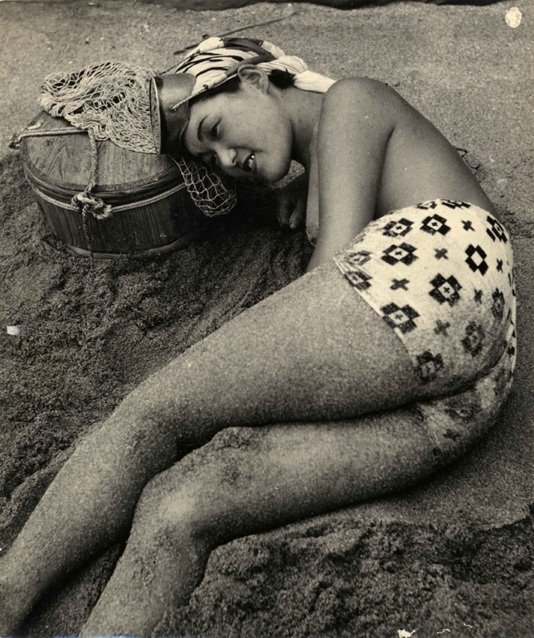
than we are as recognizable ingredients, which I think is a shame. Although sea vegetables have long been used in the cuisines of China, England, France, Greenland, Hawaii, Iceland, Indonesia, Ireland, Japan, Korea, Malaysia, New Zealand, Newfoundland, Norway, Nova Scotia, Scotland, Taiwan, and Wales they’re absent from most people’s pantries.
It’s my hope that some day someone will open the world’s first vegetarian seafood restaurant (you can call it Neptune’s Garden or something like that) and perhaps this introduction will inspire and guide them. With the rise of both foraging and the locavore movement, hopefully it will be somewhere coastal, likesay, Los Angeles. In the mean time I hope it will at least inspire coastal cooks to get a bit more adventurous and to look underwater, not just on land. At the very least it’s going to serve as an inspiration and resource for myself.
ARAME


Eisenia bicyclis is a brown algae better known by its Japanese name, Arame (Japanese: 荒布). It’s most common English name is Sea Oak although I’ve never heard anyone refer to it thus. It grows in dense forests off the coast of Korea and Japan at a depth of two to three meters.
Arame has a mild, sweet flavor which makes it a popular additive to many Korean and Japanese dishes such as miso soup. It’s also traditionally eaten, fresh or cooked, in Greenland, Iceland, Ireland, and Scotland.
Arame recipes:
- Arame Avocado Salad
- Arame Cabbage Salad with Tahini Dressing
- Arame Daikon, Sesame and Ume salad
- Arame Salad with Edamame
- Arame Soba Noodles
- Arame with Sautéed Carrots, Onions and Sesame
- Brown Rice Arame
- Brown Rice & Arame Salad
- Butternut Squash Miso Soup with Wasabi and Arame
- Cucumber Arame Salad
- Curried Cabbage and Arame
- Ginger Miso Soup with Arame
- Lemony Herbed Millet with Arame
- Spicy Udon Salad With Arame
BLADDERWRACK
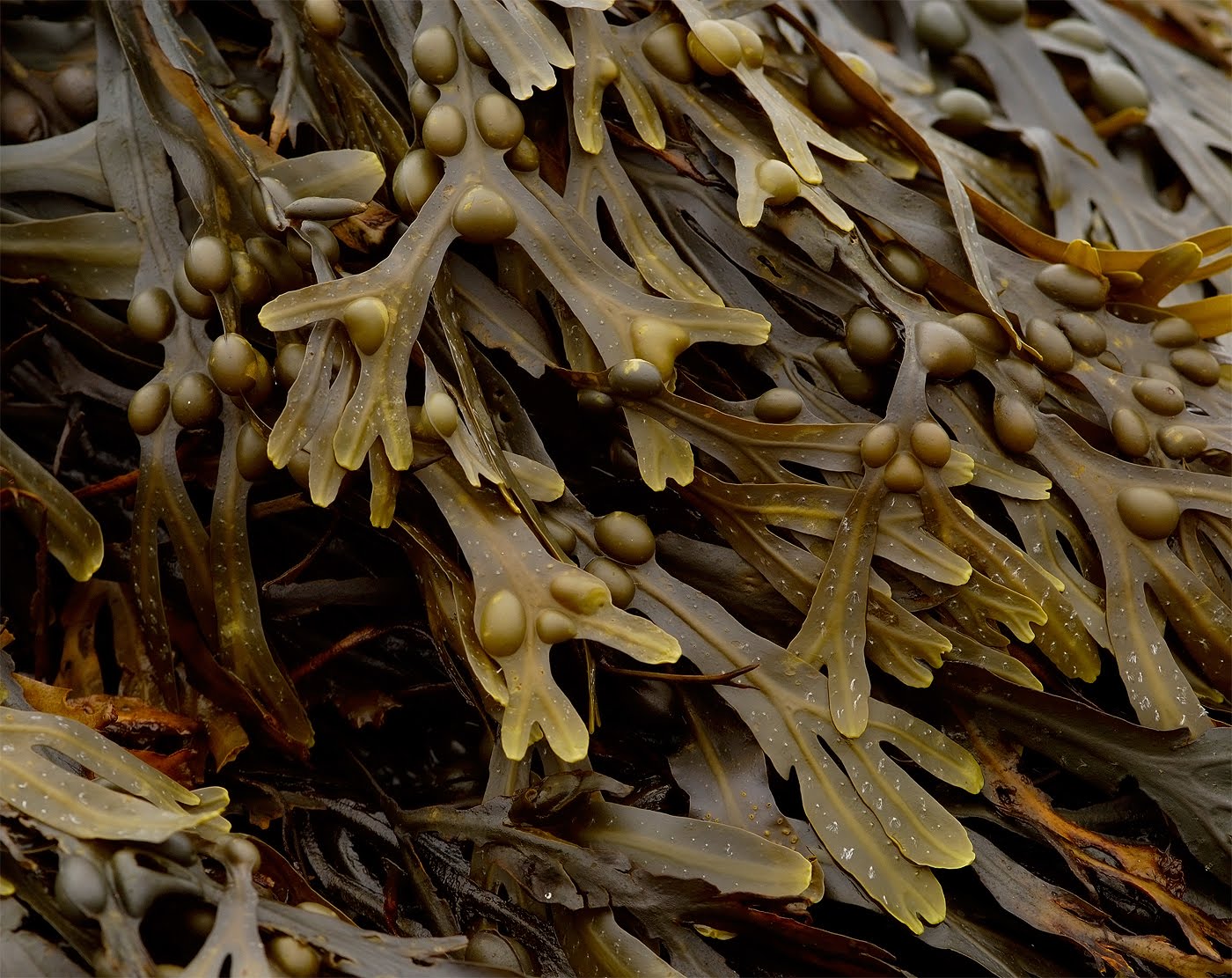

Fucus vesiculosus is known in English as bladder wrack, bladderwrack, black tang, rockweed, bladder fucus, black tany, cut weed, dyers fucus, red fucus, and rock wrack. It’s the most common brown algae found on the coast of the British Isles but also grows along the sheltered shores of the North Sea, the north Atlantic, the western Baltic Sea, and the Pacific Oceans,
Iodine, when discovered in 1811, was first obtained from bladder wrack and used extensively to treat goiter. It is usually eaten fresh, cooked, or pickled.
Bladderwrack recipes:
BLUE-GREEN ALGAE
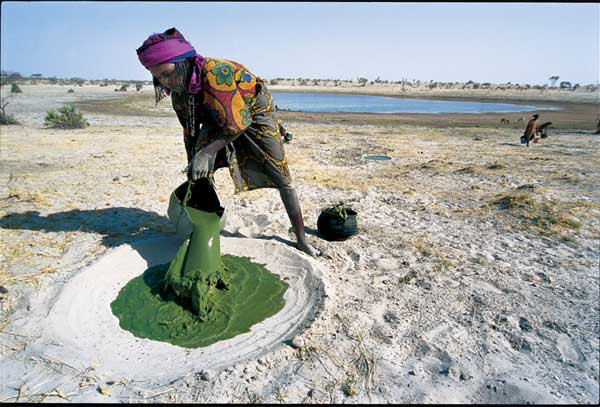
Blue-green algae isn’t actually an algae but rather a cyanobacteria. It is edible too and the ancient Aztecs and Chadians both made cakes from it (in Chad they still do and they’re known as dihé). It’s also sold as “Spirulina” and included in many supplements.
Blue-green algae recipes:
CAROLA
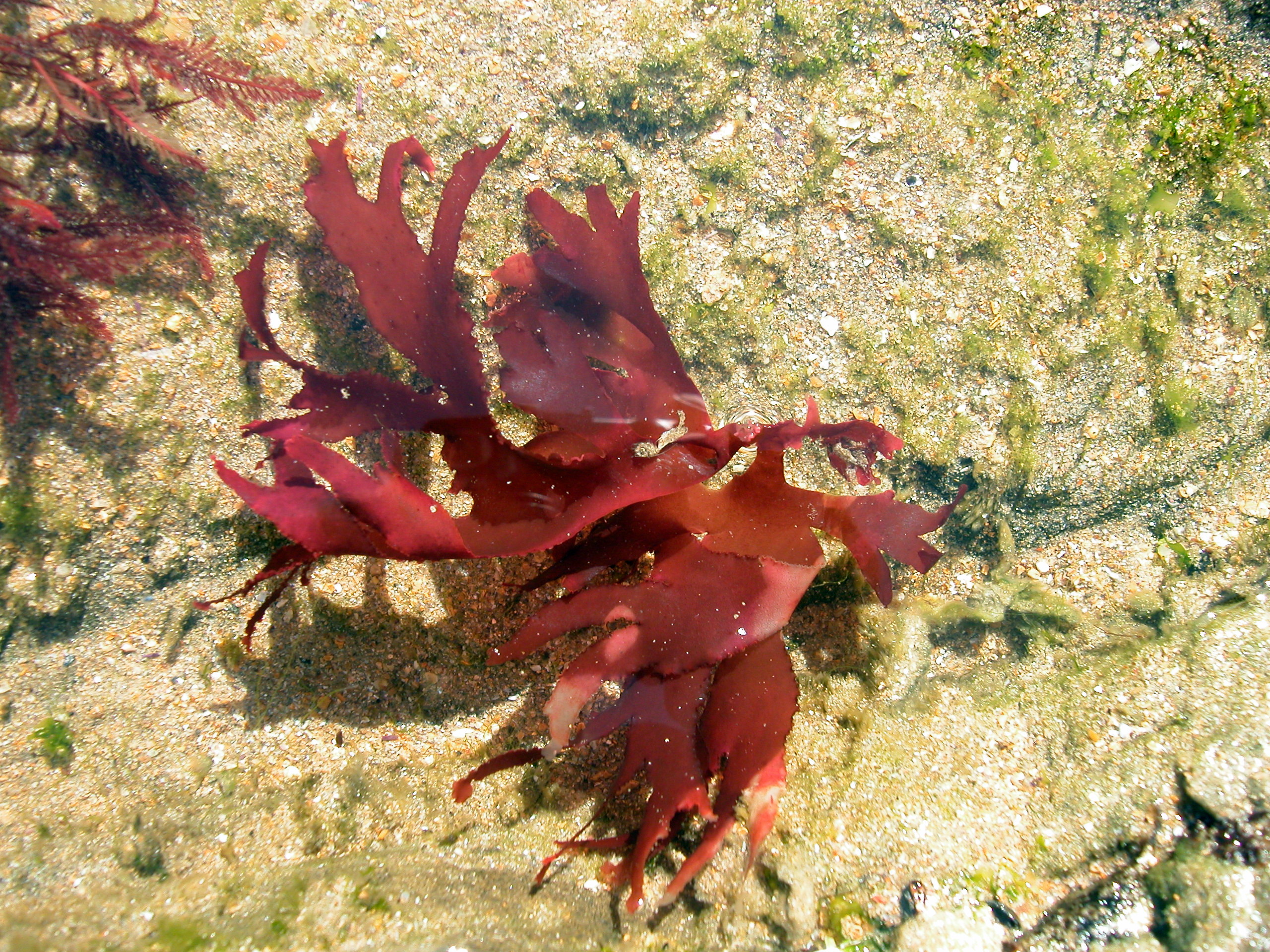
Callophyllis is a red algae genus in the family Kallymeniaceae. Several edible species (especially Callophyllis variegata) are commonly referred to as carola. It grows along the rocky coasts of Alaska, Australia, Chile, Peru, the Falkland Islands, New Guinea, New Zealand, South Africa, St. Paul Island, Tierra del Fuego, as well as Antarctic and subantarctic islands such as the Graham Land, Kerguelen, Macquarie Island, South Georgia, and the South Orkney Islands.
Carola recipes:
CARRAGEEN MOSS

Mastocarpus stellatus, also called Clúimhín Cait (cats’ puff), carrageen moss, carragheen, false Irish moss, Turkish towel, and Turkish washcloth. It is a species of red algae which is found on the exposed shores and tide pools of the British Isles and the northern New England coast.
It’s a source of carrageenan, an extract widely used in a variety of industries. In Ireland and Scotland it has long been dried and prepared as the basis of a drink consumed to ward of illness. It’s also used as an ingredient in various soups and jellies.
Carrageen moss recipes:
- Carageen Moss Pudding
- Carageen Moss Pudding
- Carragheen Irish Moss Pudding Raspberry Coulis
- Chocolate Carrageen Pudding
- Irish moss pudding with rhubarb compote
- Myrtle Allen’s Carrageen Moss Pudding
- Sea Moss Drink (Irish Moss Drink)
CHANNELED WRACK

Pelvetia canaliculata is a very common brown algae found on the rocky shallows off the coasts of France, Great Britain, Iceland, Ireland, the Netherlands, Norway, Portugal, and Spain. It grows in dense tufts to a maximum length of 15 centimeters and requires frequent exposure to the air.
It has traditionally been harvested in Ireland as animal fodder and was usually only eaten by humans during famines. An Irish folk song, “Dúlamán,” tells a tale of two such harvesters. Today it is used in a variety of cosmetic products and included occasionally in seasoning mixes.
Channeled wrack recipes:
CHLORELLA
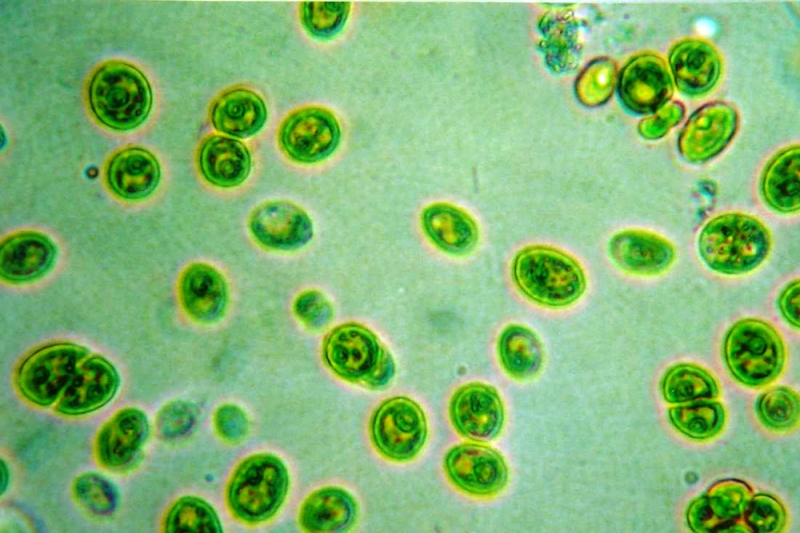
Chlorella is a microalgae — a single cell plant without leaves, roots, or stems. There are believed to be between 200,000 and 800,000 species of chlorella. The omega-3 fatty acid present in some fish oil turns many a vegetarian into a meat-eating pescatarian is actually derived from the chlorella that the fish eat.
Cutting out the middleman/middlefish is easily possible by consuming chlorella supplement tablets.
Chlorella recipes:
COCHAYUYO
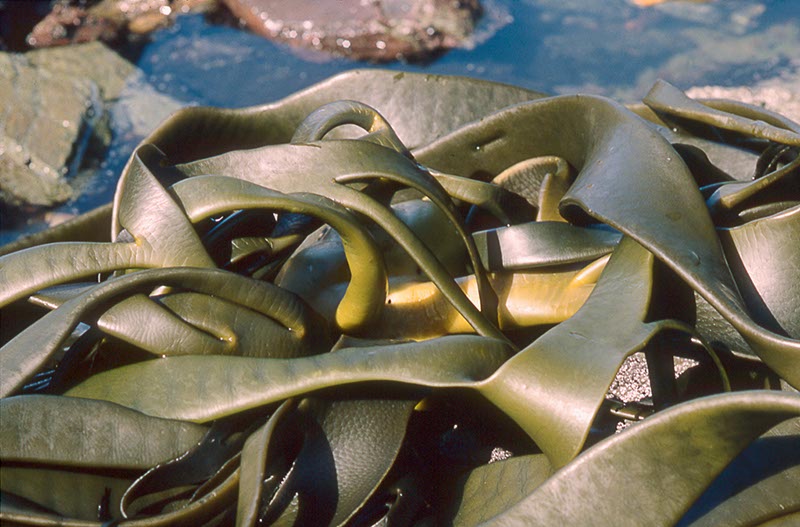
Cochayuyo (Durvillaea antarctica) is a large bull kelp species common along the exposed shores of Chile, New Zealand, and and the subantarctic islands. Its scientific name “Durvillaea” is a reference to French explorer Jules Dumont d’Urville.
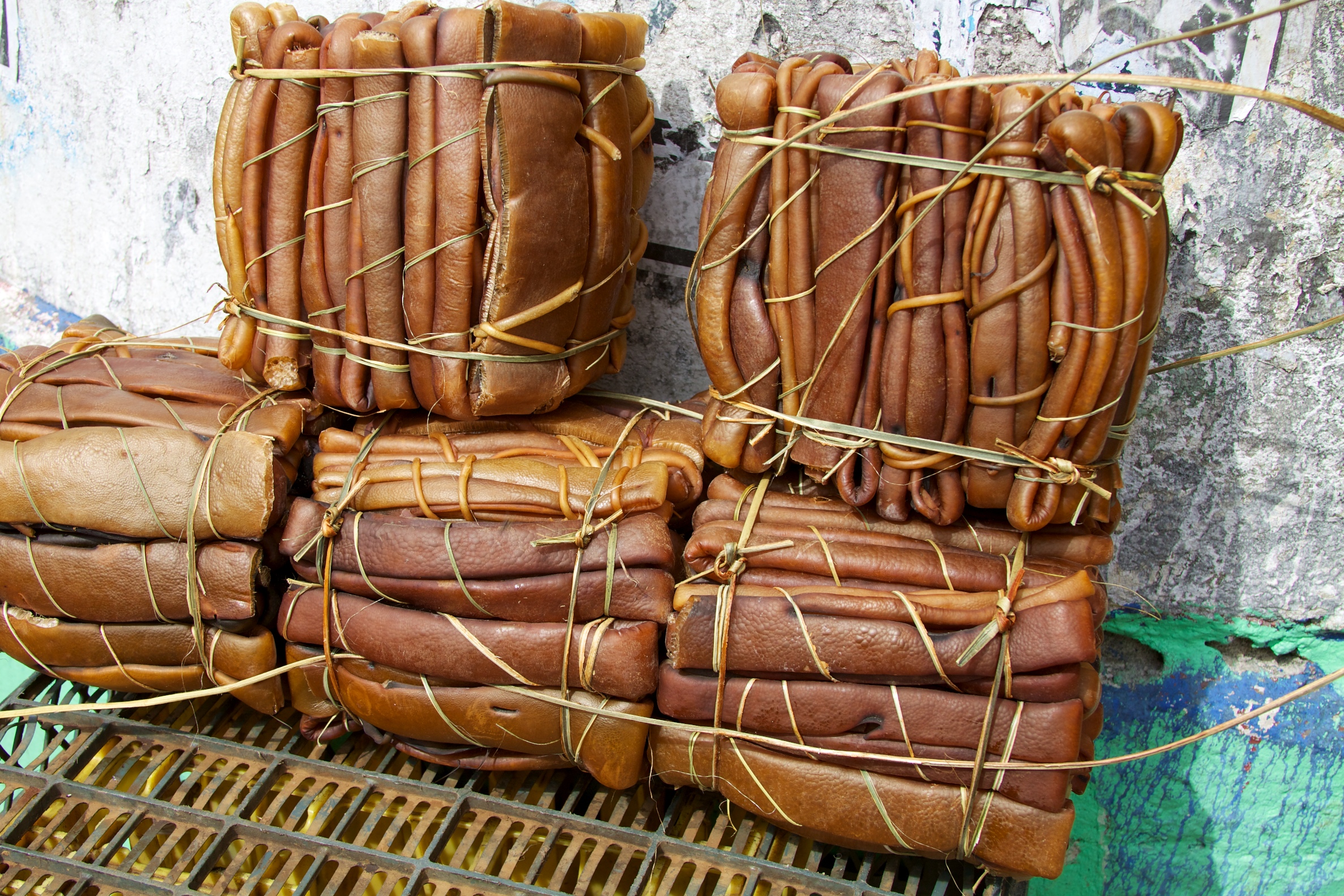
In Quechua Cuisine, it’s known as hulte and is used salads and stews. In Chile it is traditionally sold dry and then reconstituted — but the expression, “remojar el cochayuyo,” also refers to sexual intercourse. In Peru it is widely used incorporated into ceviche and is a primary ingredient of a soup called chilcano.
Cochayuyo recipes:
DABBERLOCKS

Alaria esculenta is a broad algae known in English as dabberlocks, Atlantic Wakame, badderlocks, honeyware, Irish wakame, Murlins, or winged kelp. In Irish it’s known as Láir or Láracha. It grows in the far north Atlantic Ocean. It grows attached to rocks just below low-watermark and on rocky shores.
It has a mild, semi-sweet flavor and is traditionally eaten fresh or cooked in Greenland, Iceland, Ireland, and Scotland.
Dabberlocks recipes:
DULSE

Dulse (Palmaria palmata) is a red algae also known as creathnach, dulse, duileasg, dillisk, dilsk, red dulse, sea lettuce flakes. It grows on the coasts of the north Atlantic and Pacific.
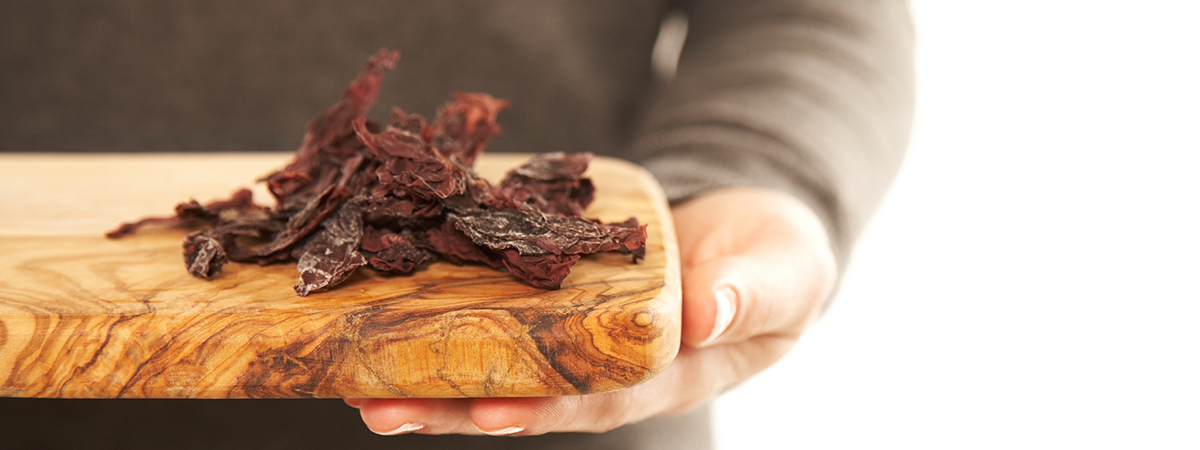
In Iceland, where it’s known as söl and eaten with butter, it has long been an important source of dietary fiber and protein. It’s popularly eaten dried and uncooked as a snack food but when fried, its salty flavor has been compared to that of bacon.
Dulse recipes:
ECKLONIA CAVA
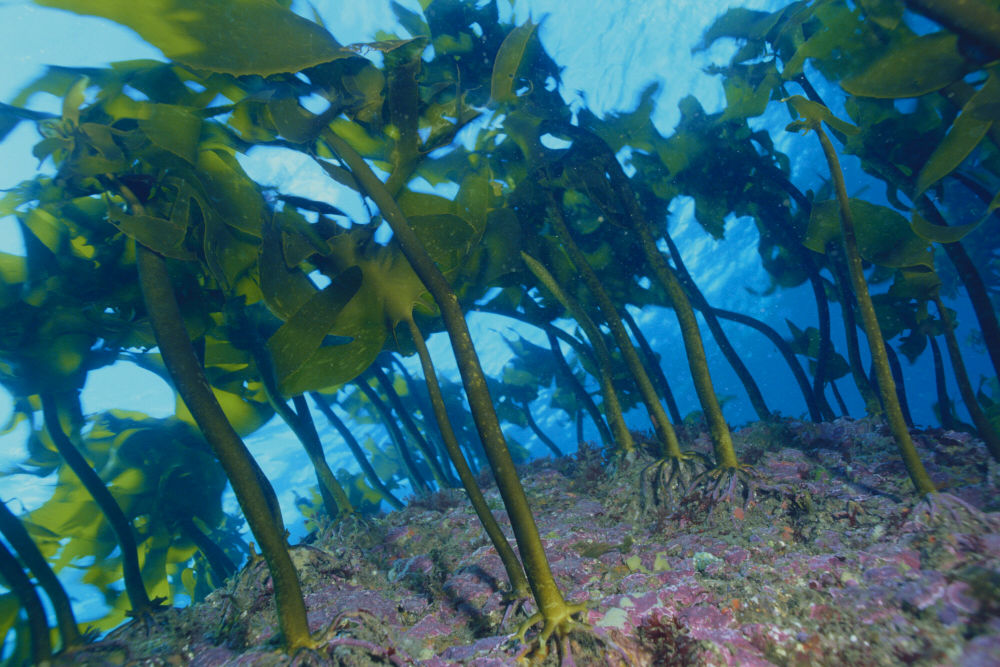
Ecklonia cava is a brown algae found off the coasts of Japan and Korea where it’s known as カジメ and 감태, respectively. It grows in dense forests at depths of two to ten meters.

It’s traditionally been used as a fertilizer, herbal remedy, and added to baths. In Kyushu its traditionally added to miso soup.
Ecklonia cava recipes:
EUCHEUMA
Eucheuma is a red algae found in the tropics of the Indo-Pacific region from eastern Africa to Guam, with the largest concentrations occurring in Southeast Asia. A few species are also located around Lord Howe Island and southwestern Australia. It grows on sand and rocky seafloor areas along coral reefs.

It’s used as a source of carrageenan. The species Eucheuma cottonii is known in the the Philippines as guso and there and in Indonesia it’s often lightly boiled, mixed with spices, and served as a salad.
Euchema recipes:
FURBELOW
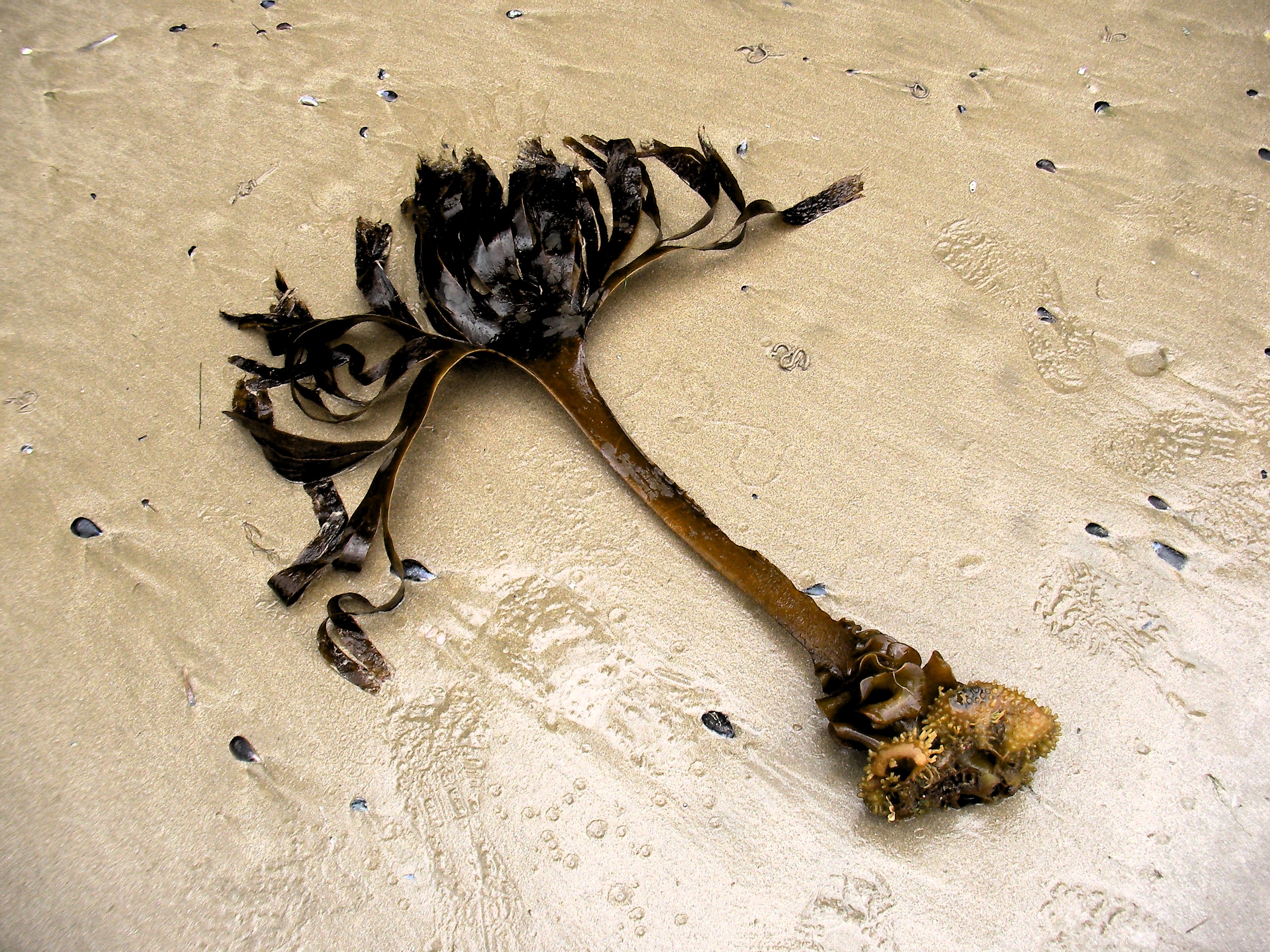
Furbelow (Saccorhiza polyschides) is a large alga — the largest, in fact, in Europe. The wavy frills near the base of its tough, rigid stipe and are the source of its common name. The ruffles dissipate wave energy and lessen stress to the holdfast. It is found on the shores of Britain, France, Greece, Helgoland, Ireland, Isla de Alboran, Italy, the Netherlands, Norway, Portugal, Scandinavia, and Spain.
Furbelow recipes:
GUTWEED

Ulva intestinalis is a green algae also known as gutweed and grass kelp. It’s found on intertidal rocks, tide pools, and reef flats of the Baltic, Bering, North Sea, and Mediterranean seas as well as off the coasts of Japan, Korea, and Mexico. It favors brackish areas such as the mouths of rivers. It’s found throughout much of the world and its name seems in most languages to hint at its medicinal function. For example, in Thai it’s known as สาหร่ายไส้ไก่ (“binding algae”) and in Danish, Tarm-rørhinde (“tarm” means “bowel”).
Gutweed recipes:
GELIDIELLA
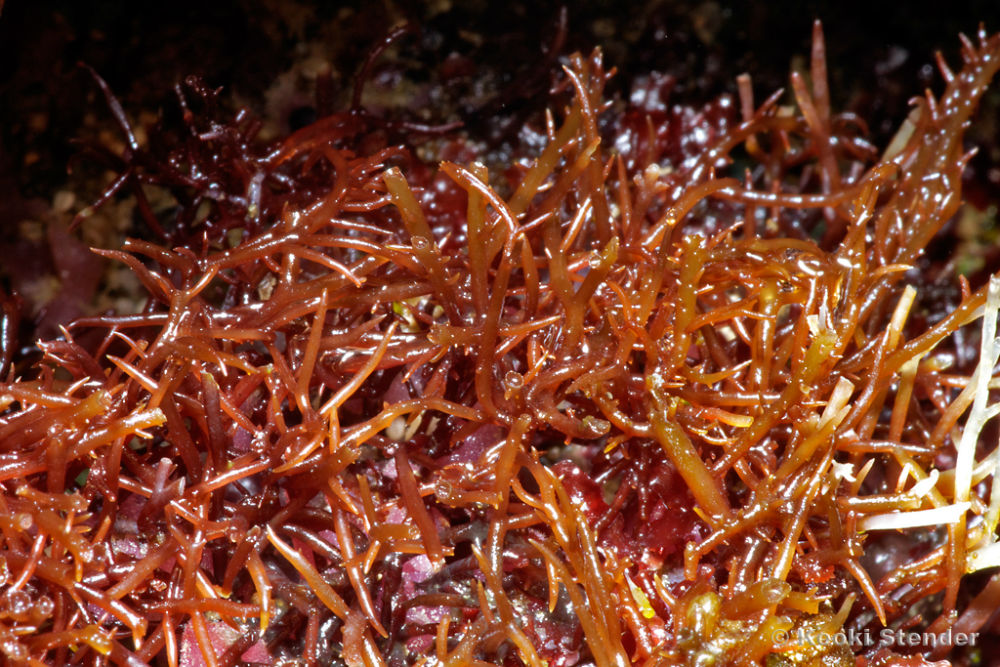
Gelidiella acerosa is a red algae found mostly in the tropics and subtropics. It’s found on surf-exposed and moderately wave-sheltered rocks and reefs, and tide pools in Hawaii, Asia and the Indo-Pacific — especially Japan, India, and China.
Gelidiella recipes:
HIJIKI (Sargassum fusiforme)
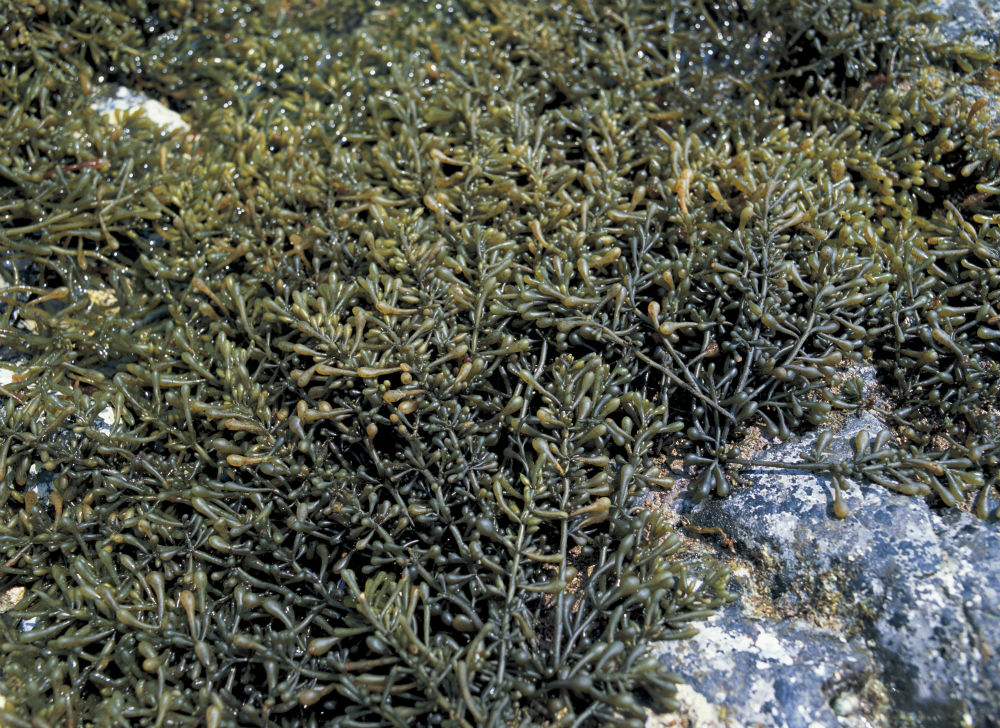
Sargassum fusiforme is most commonly referred to in English as hijiki, which comes from the Japanese “ヒジキ.” It grows on the rocky shores of Japan, Korea, and China.

Hijiki has a mild, earthy flavor. In Japan it’s often stewed in dashi with soy sauce, sugar, carrots, lotus and fried tofu. Hijiki is also not uncommon in salads, stir-fries, and sushi. It is very high in fiber although some avoid it for its small but measurable amount of inorganic arsenic.
Hijiki recipes:
- Hijiki Chilled Tofu
- Hijiki Seaweed Salad
- Japanese Fried Rice with Edamame, Tofu and Hijiki Seaweed
- Spicy Hijiki Seaweed Avocado Salad
- Tofu Hijiki Patties
HIROMI
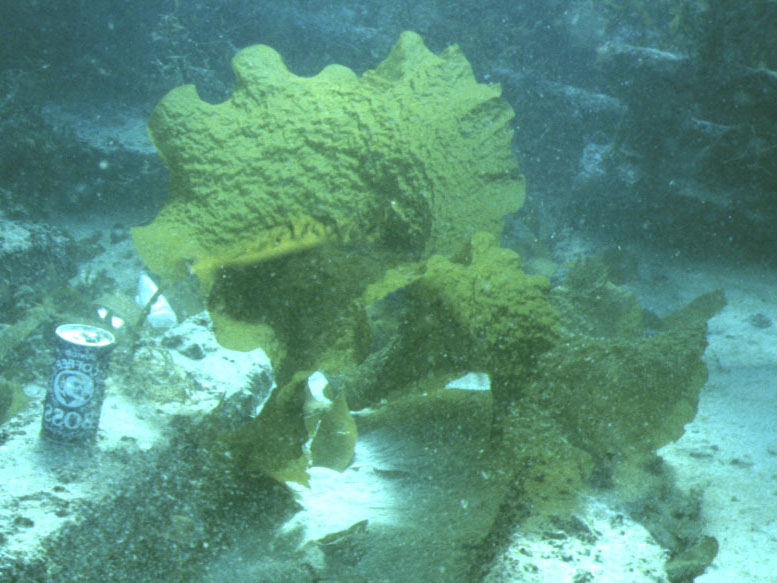
Hiromi (Undaria undarioides) is a brown algae in the same genus as wakame. Its English name is adapted from the Japanese name, ヒロメ. Its range is relatively small and includes coastal areas off Honshu, Shikoku, and Kyushu.
Hiromi recipes:
IRISH MOSS

Irish Moss (Chondrus crispus) (also known as carrageen moss) is a red algae which grows in rocky coastal areas of the North Atlantic in Europe and North America.
In Ireland and Scotland it’s boiled in milk, strained, and then seasoned with ingredients such as brandy, cinnamon, sugar, vanilla, and whiskey. In Venezuela it’s boiled in milk and served with honey to relieve chest congestion and sore throat.
Gracilaria is commonly referred to as “Irish Moss” in the Caribbean, where it’s used to make a beverage — but is only distrantly related to true Irish Moss (Chondrus crispus).
Irish moss recipes:
KNOTTED WRACK

Knotted Wrack (Ascophyllum nodosum) is also known as feamainn bhuí, rockweed, Norwegian kelp, knotted kelp, and egg wrack — the latter on abbout of its egg-shaped air bladders. It grows only in the North Atlantic Ocean and is common on the northwestern coast of Europe and eastern Greenland.
It is harvested for use in fertilzers and for meal consumed by animals (including humans).
Knotted wrack recipes:
KOMBU

Kombu refers to all members of the Laminariaceae family of kelp (which also includes arame, kurome, giant bladder kelp, and other species). Therefore, to avoid confusion, it’s sometimes differentiated as “Dashi Kombu” (Saccharina japonica). It is native to Japan but also extensively cultivated in China (where it is known as haidai (海帶)) and Korea (where it is known as dashima (다시마)), as well as in France and Russia. It entered the English language as “kombu” in the 1860s.

Kombu has a strong flavor and is used in Ainu and Japanese cuisine to make dashi. It’s also pickled, dried and shredded, eaten fresh in sushi, or steeped to make a tisane known as “kombucha” (昆布茶) — of no relation to the fermented health beverage of the same name.
Kombu recipes:
KUROME
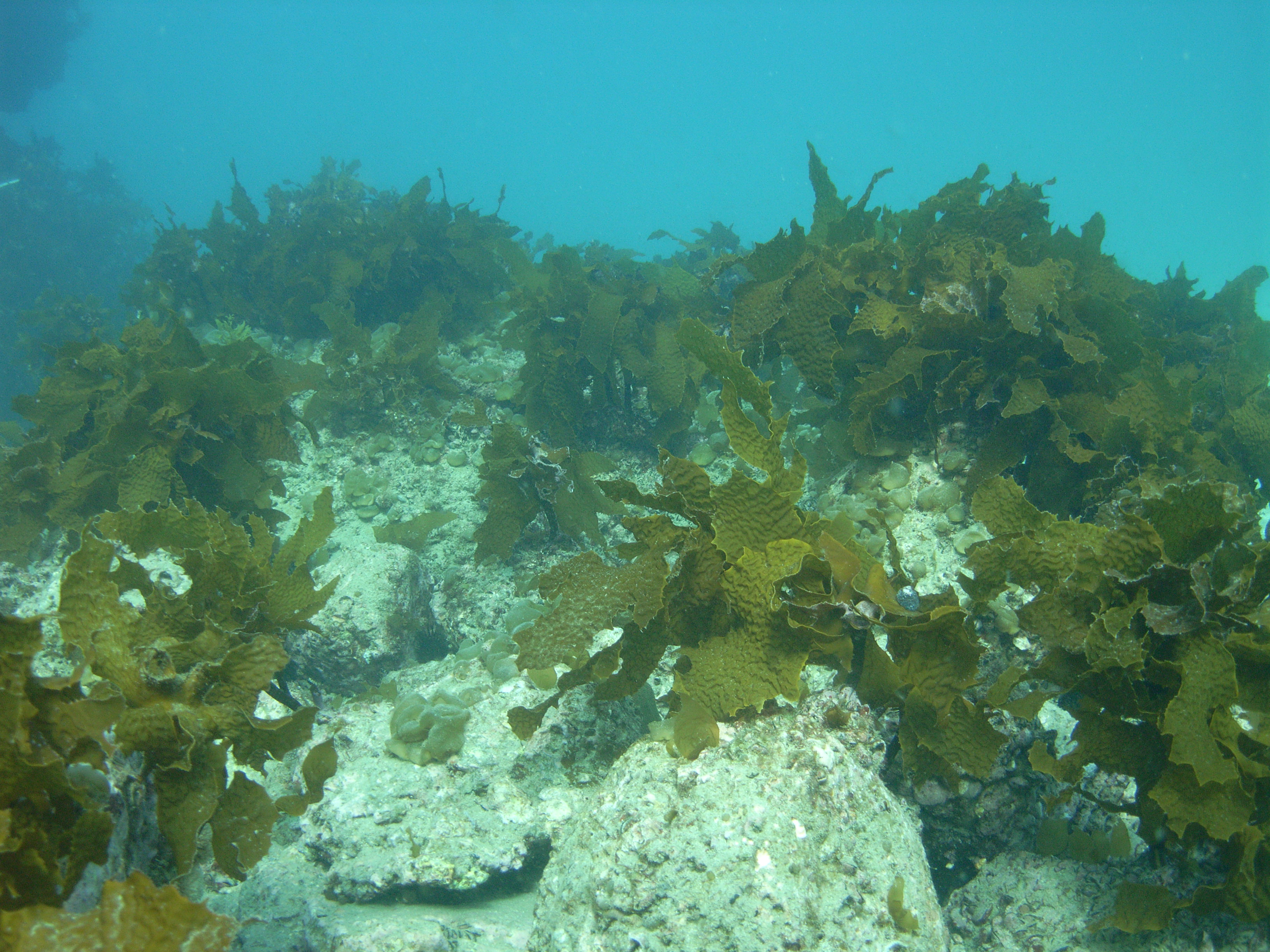
Kurome (Ecklonia kurome) (Japanese: 黒布) is a brown algae which is found along the coasts off of Honshu, Jejudo, Jindo, Kyushu, and in the Seto Inland Sea.
Kurome recipes:
LAVER

Laver (genus Porphyra) is a red algae that grows in shallow seawater and comprises approximately 70 species. In the west the principal variety is purple laver (Porphyra umbilicalis).
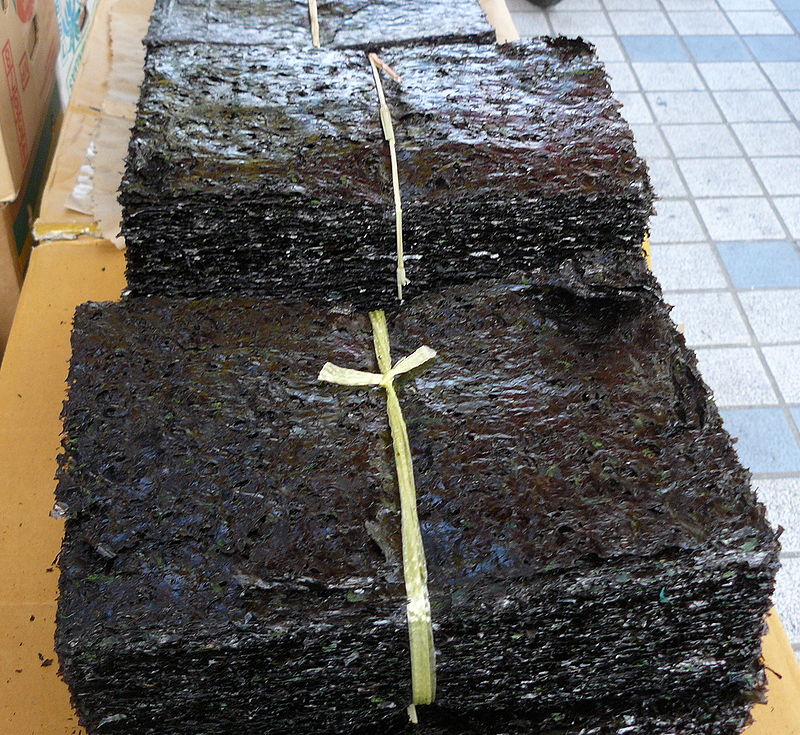
In East Asia, the more common varieties are P. yeeziensis and P. tenera, which are used to make nori (海苔) and gim (김), both of which are eaten as snacks and in ingredients for sushi.

Along the coasts of the Irish Sea it’s known as slake, and sometimes cooked with butter and lemon juice, eaten as a salad, or used in a sauce that accompanies mutton, crab, monkfish, or other animals. In Wales it’s used to make laverbread, traditionally eaten fried with bacon and cockles for breakfast. It’s additionally used to make a soup, cawl lafwr. In North Devon it’s traditionally added to oatmeal.
Laver recipes:
MOZUKU
Mozuku (Cladosiphon okamuranus) (Japanese: モズク) is found in Kagoshima and Okinawa (where it’s known as “sunui”). It grows on calm reef flats at depths of one to three meters and it grown in farms.

It’s eaten as both food and in supplements. It’s harvested for a type of sulfated polysaccharide, Fucoidan, which is marketed as a cancer treatment and included in health supplements.
Mozuku recipes:
- Marinated Mozuku Seaweed with Cucumber
- Mozuku with vinegar
- Mozuku Seaweed Kakiage Fritters
- Mozuku Yamakake
OARWEED
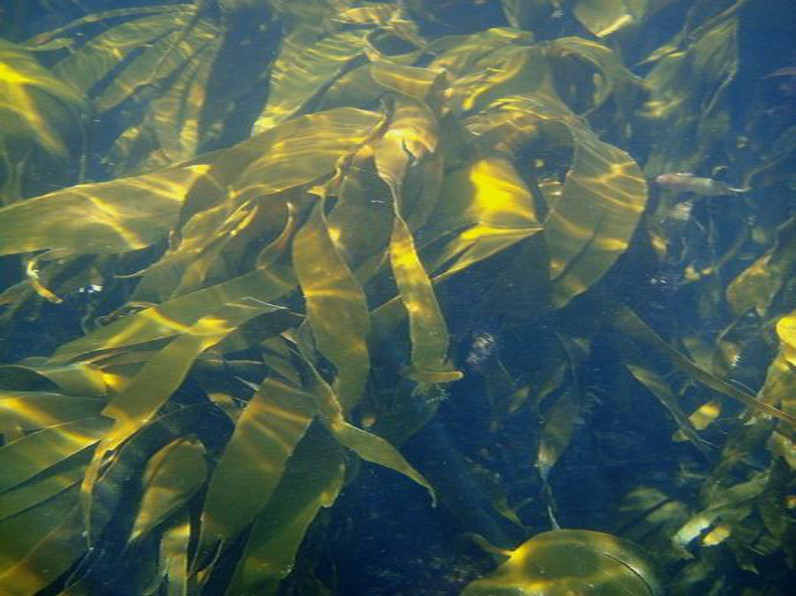
Oarweed (Laminaria digitata) is a large brown algae found in the North Atlantic.
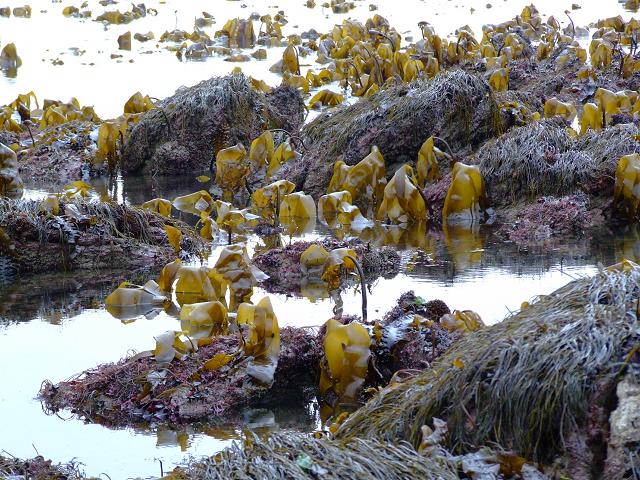
In China and Japan it’s used to make dashi, snacks, and seasonings. In the West it’s primarily used by the food industry as a thickener.
Oarweed recipes:
SARGASSUM

Sargassum refers to a genus of brown macroalgae distributed throughout the temperate and tropical oceans and sometimes referred to as gulfweed. The Atlantic Ocean’s Sargasso Sea was named after the algae, as it hosts a large amount of sargassum. Some sargassum is planktonic and generally inhabits shallow water and coral reefs. Other species, such as Sargassum muticum, grows on rocks.
Sargassum is cultivated and used as an herbal remedy in China to reduce excessive phlegm.
Sargassum recipes:
SEA GRAPES
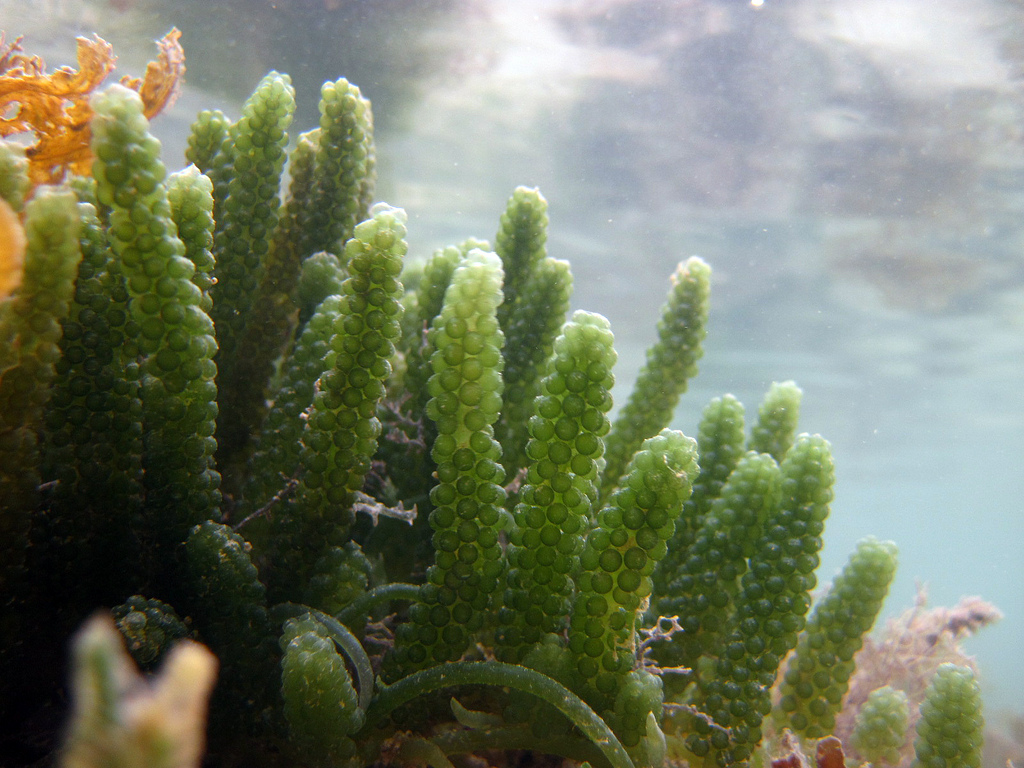
Sea grapes (Caulerpa lentillifera) are native to tropical areas of the Indian and Pacific Oceans, though they are found as an invasive species in the coasts of California and Hawaii. They grow in extensive meadows in both shallow lagoons and at depths of over 50 meters.

Also known as green caviar — is primarily cultivated in Okinawa, the Philippines, and Sabah. In Okinawa sea grapes are usually eaten fresh or in a salad. In the Philippines, where they’re known as ar-arosep, l ato, arosep, or ar-arosip, they’re usually eaten either raw or in a salad with onions, tomatoes, vinegar, and fish sauce or paste (bagoong). In Sabah they’re known as latok.
Sea grape recipes:
SEA LETTUCE

Sea lettuce refers to various species (of which nearly 100 are known) of the genus Ulva, a widely distributed green algae. Many species of sea lettuce are a consumed as food in China, Great Britain, Ireland, Japan, and Scandinavia.
It’s often eaten raw in salads or cooked in soups. Some species are also used to make Nori (although laver is usually preferred).
Sea lettuce recipes:
SEA MOSS
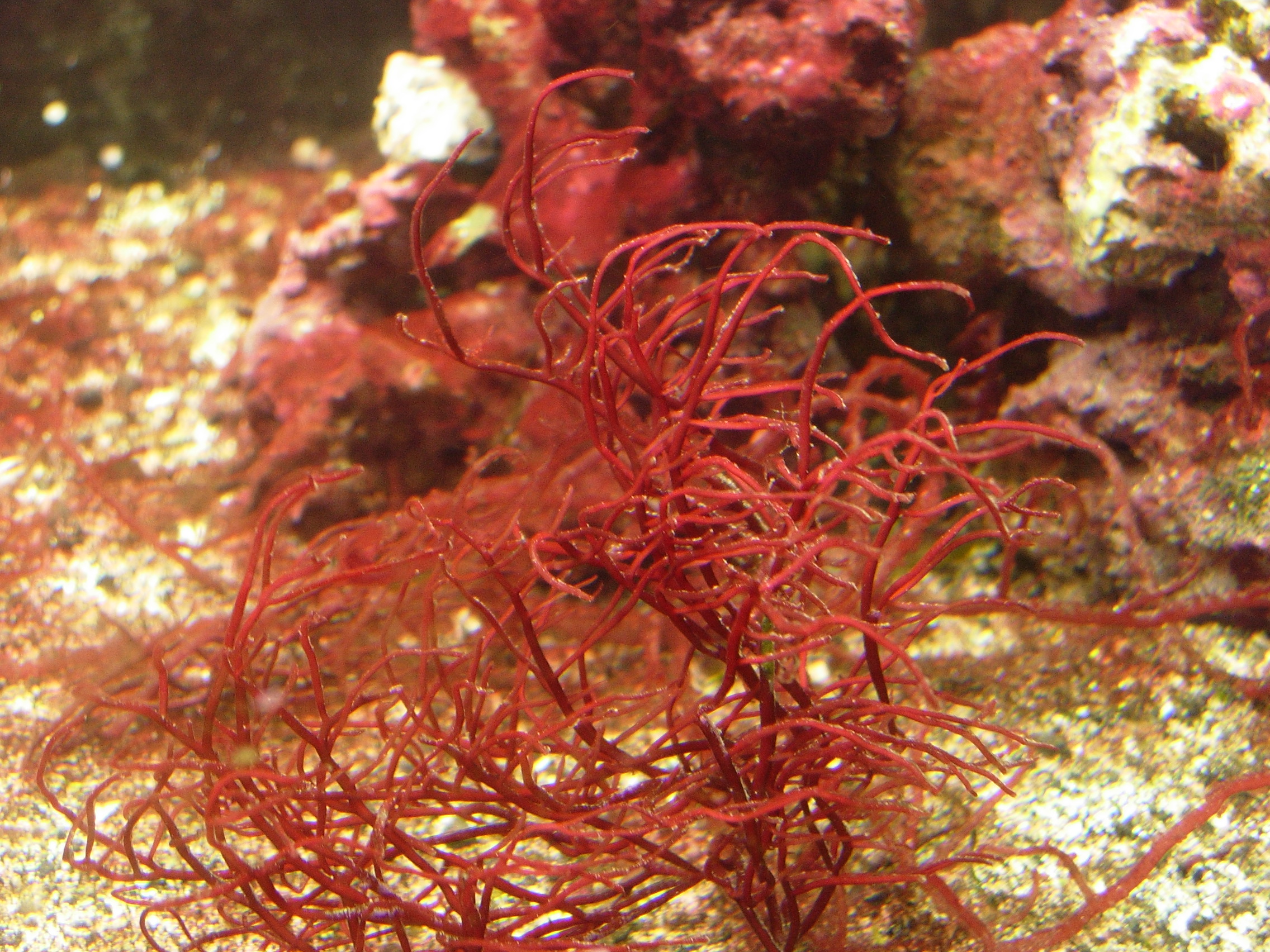
Sea Moss or seamoss (genus Gracilaria) is a type of red algae which grows in many parts of the world.

In Japan (Japanese: オゴノリ), it’s used as a source of agar or eaten cold, sometimes in sushi. In Hawaii it’s used in poke. In the Philippines, it’s known as “gulaman” and used in cooking.
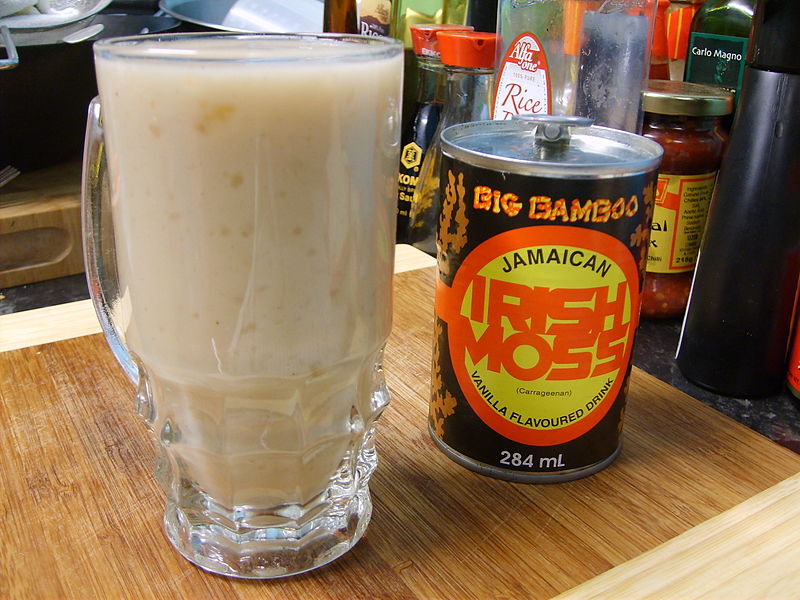
In Jamaica and Trinidad & Tobago, it’s sometimes marketed as Irish Moss (though only distantly related to Chondrus crispus). There it is boiled with milk and honey and purported to be an aphrodisiac.
Sea moss recipes:
SUGAR KELP

Sugar kelp (Saccharina latissima) is a brown algae also known as Poor Man’s Weather Glass, Sea Belt, and Devil’s Apron. It is found in the sheltered, rocky seabeds of the Arctic, North Pacific, and North Atlantic, including coasts of Alaska, Canada, the British Isles, the Barents Sea, Galicia, Greenland, Iceland, the Pacific Northwest, and elsewhere.

It’s sometimes referred to as “kombu royale” for its pronounced sweetness which, along with its MSG, makes it a popular ingredient in dashi, a flaked seasoning, or as a pickled snack.
Sugar kelp recipes:
SPIRAL WRACK
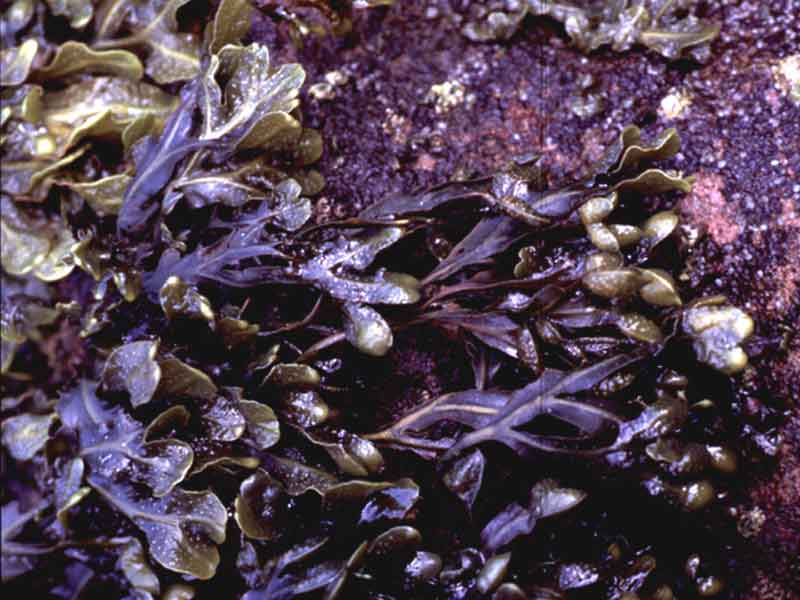
Spiral wrack, or flat wrack (Fucus spiralis) grows in the Atlantic Ocean along the coasts of the British Isles, Western Europe, the Northeast US, the Canary Islands, and Svalbard.
Spiral wrack recipes:
THONGWEED
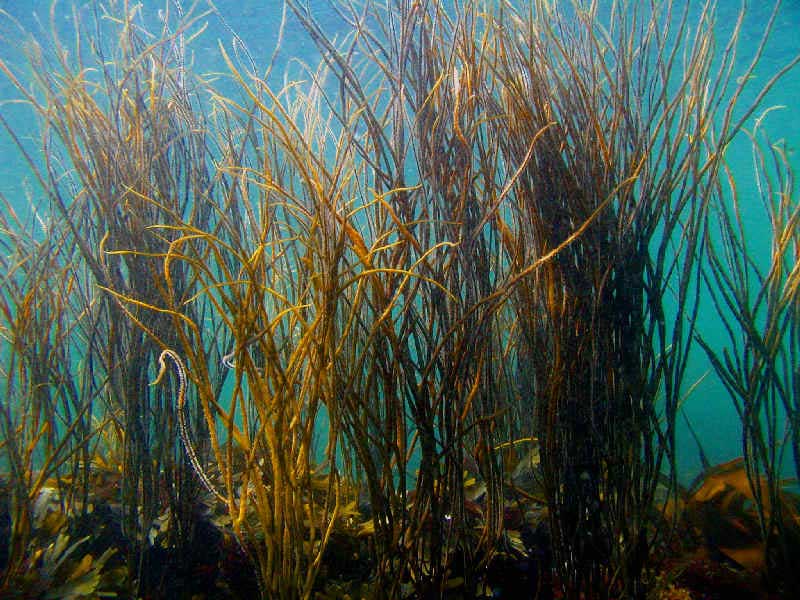
Thongweed (Himanthalia elongata) is a brown algae known by the common names brown buttonweed, leafweed, buttonweed, sea thong, and sea spaghetti (in France it is also sometimes known as haricot de mer). It is found in the northeast Atlantic Ocean, the Baltic, and the North Sea. It is the only classified member of the genus, Himanthalia.

Thongweed has a mild, salty, sweet flavor sometimes compared to that of squid and cuttlefish. In France it is sometimes served as an ingredient in salad or with fish. In Ireland and Scotland it is often used in the preparation of laverbread. In Galicia it is cooked with rice, pasta or fried and served as a snack.
Thongweed recipes:
TOOTHED WRACK
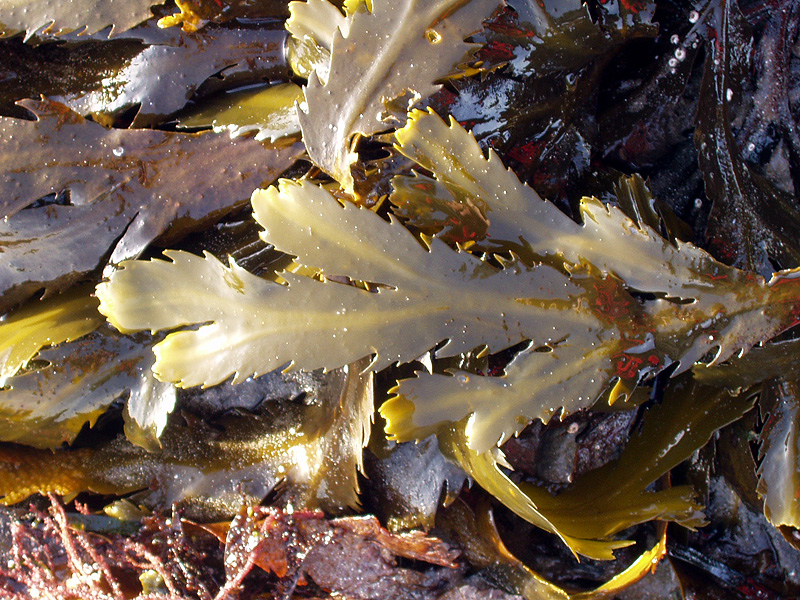
Toothed wrack (Fucus serratus), also known as serrated wrack, naturally grows in the Atlantic Ocean from Svalbard in the north over to the Canary Islands in the south and along the coast of North America. It was introduced to Iceland and the Faroe Islands by humans sometime in the last 1,000 years. In France and Ireland, toothed wrack has long been used in the production of cosmetics. In Scotland’s Western Isles it is typically used as a fertilizer.
Although little-eaten compared to other edible sea vegetables, it is, in fact edible. Its flavor is delicate and somewhat nutty. Some toss it in butter, use it in soups, or to make a tisane.
Toothed wrack recipes:
WAKAME

Wakame (Undaria pinnatifida) is supposedly known in English as “sea mustard” although it is far more commonly referred to by its Japanese-derived name, which comes from “ワカメ.” In China and Korea it’s known as qúndài cài (裙带菜), and miyeok (미역), respectively. Largely thanks to through shipping and mariculture it has spread beyond it’s natural range as an invasive species.
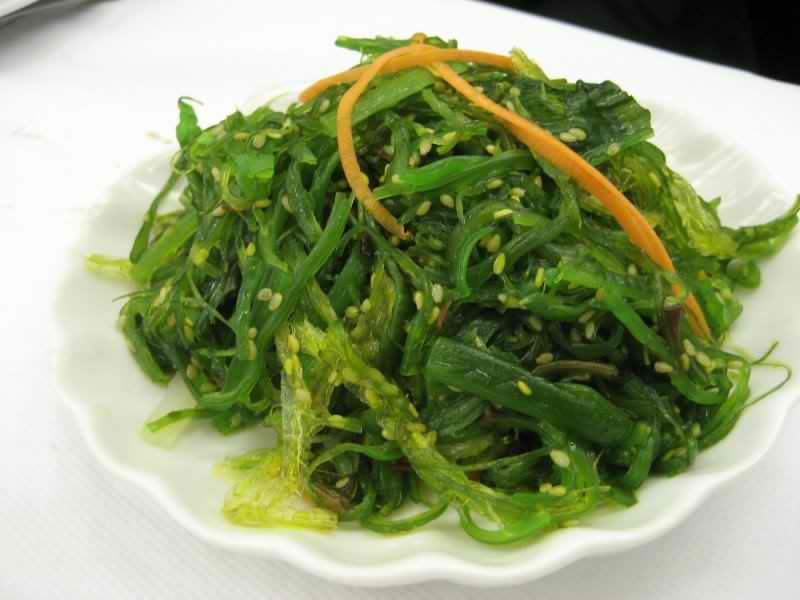
Wakame’s flavor is subtle and sweet. Its often used in soups (especially miso) and salads, where it’s often paired with cucumber and tofu and dressed with rice vinegar, sesame seeds, and soy sauce. In Korean cuisine, a wakame soup called miyeok guk is popular, especially with new mothers and on birthdays.
Wakame recipes:
FURTHER READING
Sea Vegetables: Harvesting Guide & Cookbook by Evelyn McConnaughey (1985)
Cooking with Sea Vegetables by Peter Bradford and Montse Bradford (1986)
Sea Vegetable Celebration by Shep Erhart and Leslie Cerier (2001)
Vegetables from the Sea: Everyday Cooking with Sea Greens by Jill Gusman and Adrienne Ingrum (2003)
The New Seaweed Cookbook: A Guide to Discovering the Deep Flavours of the Sea by Crystal June Maderia (2007)
WEBSITES
See also: They Sing Sea Songs Down by the Seashore — Vegetarian Sea Shanties of a Sort

Eric Brightwell is an adventurer, essayist, rambler, explorer, cartographer, and guerrilla gardener who is always seeking paid writing, speaking, traveling, and art opportunities. He is not interested in generating advertorials, cranking out clickbait, or laboring away in a listicle mill “for exposure.”
Brightwell has written for Angels Walk LA, Amoeblog, Boom: A Journal of California, diaCRITICS, Hidden Los Angeles, and KCET Departures. His art has been featured by the American Institute of Architects, the Architecture & Design Museum, the Craft Contemporary, Form Follows Function, Los Angeles County Store, the book Sidewalking, Skid Row Housing Trust, and 1650 Gallery. Brightwell has been featured as subject in The Los Angeles Times, Huffington Post, Los Angeles Magazine, LAist, CurbedLA, Eastsider LA, Boing Boing, Los Angeles, I’m Yours, and on Notebook on Cities and Culture. He has been a guest speaker on KCRW‘s Which Way, LA?, at Emerson College, and the University of Southern California.
Brightwell is currently writing a book about Los Angeles and you can follow him on Ameba, Duolingo, Facebook, Goodreads, Instagram, Mubi, and Twitter.




8 thoughts on “The Brightwell Guide to Sea Vegetables”